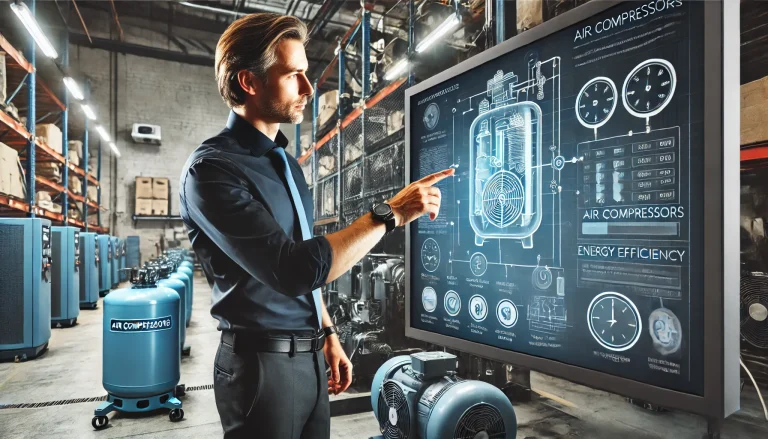Choosing the right industrial air compressor is crucial for businesses relying on consistent and efficient performance. With various models and features available, finding the perfect fit can feel overwhelming. A well-informed decision ensures long-term reliability and cost-effectiveness.
From power requirements to maintenance needs, several factors play a role in selecting the ideal compressor. Understanding these considerations not only simplifies the buying process but also helps avoid costly mistakes. Whether for manufacturing, construction, or other industries, the right compressor can make all the difference.
Assessing Your Air Compressor Needs: Industrial vs. Commercial Use
Determining the intended use of the air compressor establishes whether an industrial or commercial model is appropriate. Industrial compressors are built for continuous operation in demanding environments like manufacturing, construction, and energy sectors. They deliver high air capacity, typically measured in cubic feet per minute (CFM), and withstand intense usage over long periods.
Commercial air compressors, on the other hand, cater to smaller-scale applications, such as automotive repair shops or general workshops. These units usually feature lower CFM ratings and are ideal for intermittent operation. Selecting a commercial compressor for industrial tasks can result in inefficiency, frequent breakdowns, and higher overall costs.
Capacity requirements, duty cycles, and energy efficiency should guide the decision between industrial and commercial options. Large-scale operations that run multiple tools or equipment simultaneously may demand industrial-grade systems due to their robust build and higher performance levels. The industrial air compressor buying guide can provide additional insights into identifying the right compressor based on specific usage needs.
Understanding the differences between industrial and commercial usage ensures compatibility with the compressor’s capabilities, preventing operational disruptions and securing maximum efficiency.
Understanding Air Capacity, Pressure Ratings, and Power Requirements
Air capacity, measured in CFM (cubic feet per minute), determines how much air a compressor delivers. Higher capacity is essential for tools running simultaneously in industries like manufacturing or construction. For instance, paint sprayers and pneumatic grinders demand higher CFM compared to nail guns or tire inflators.
Pressure ratings, measured in PSI (pounds per square inch), indicate the force of compressed air. Industrial tools often require specific PSI levels; therefore, matching tool requirements with the compressor’s output ensures efficiency. For high-pressure tasks, such as drilling or heavy machinery operations, compressors with dual-stage systems offering up to 175 PSI are often preferred.
Power requirements depend on the compressor type and application. Electric-powered units are common for indoor use due to lower emissions. Gas-powered models are suitable for outdoor operations or locations without stable electrical supply. To avoid unnecessary energy consumption, users should pair the power source with operational demands. Energy-efficient models, compliant with modern standards, also support cost savings over long-term usage.
Incorporating accurate capacity, pressure, and power considerations into the selection process reduces downtime and increases productivity. This alignment, as part of an industrial air compressor buying guide, ensures compatibility with industrial needs. Click here to explore top-rated compressors and learn how to choose the right model for your application.
Energy Efficiency Considerations for Cost Savings
Energy-efficient air compressors reduce operational costs by minimizing electricity consumption. Efficient models often feature advanced motor designs, variable-speed drives (VSD), and energy recovery systems. These technologies optimize energy use, especially during fluctuating demand in industrial applications.
Operational efficiency improves when companies match the compressor’s capacity to application requirements. Oversized compressors result in wasted energy, while undersized options increase strain and energy usage. Manufacturers offer tools or calculators to estimate the ideal capacity to support optimal performance with lower energy input.
Proper maintenance enhances energy efficiency. Regularly inspecting components like filters, valves, and air systems prevents inefficiencies caused by air leakage or blockages. Studies have shown that compressed air system leaks can waste up to 30% of generated energy, making regular upkeep essential.
Energy-efficient certifications, such as ENERGY STAR or ISO 50001 compliance, provide transparency in performance ratings. They help businesses choose models designed for lower energy consumption under industrial load conditions. When evaluating options in the industrial air compressor buying guide, these certifications ensure long-term cost savings.
Investing in advanced control systems, including automated shutdowns or load/unload controls, reduces energy use during idle periods. These systems pay off over time through reduced electricity bills.
Maintenance and Longevity: What to Look for in a Reliable System
Optimal maintenance practices extend the lifespan of industrial air compressors. Reliable systems are designed with user-friendly maintenance features like easily accessible components and clear service alerts. Regular cleaning and routine part replacements prevent wear and ensure continuous operation. A model with a built-in maintenance schedule indicator simplifies upkeep for operators.
Durable build quality ensures better performance over time. Compressors with robust materials, such as cast iron or heavy-duty steel, resist wear from prolonged use in industrial environments. Heat-resistant coatings further enhance durability by minimizing damage from temperature fluctuations. Checking for a proven track record of reliability through industry reviews can verify a system’s longevity.
Efficient cooling systems reduce the risk of overheating. Advanced cooling mechanisms, including aftercoolers and thermal protection switches, maintain operational temperatures under heavy workloads. Compressors with these features support long-term reliability in high-demand settings.
Comprehensive warranties add to reliability assurance. Manufacturers offering warranties of three years or more demonstrate confidence in their product’s durability. Evaluating warranty terms for coverage of essential parts like motors and pumps ensures broader protection against unexpected issues. In an industrial air compressor buying guide, noting warranty specifics provides insight into a system’s reliability.
Top Features to Compare When Selecting an Industrial Air Compressor
Choosing the right industrial air compressor is a critical decision that directly impacts operational efficiency and long-term costs. By focusing on key features like air capacity, pressure ratings, power requirements, and energy efficiency, businesses can ensure their investment aligns with their specific needs.
Durability, ease of maintenance, and advanced energy-saving technologies further enhance performance and cost-effectiveness. A thoughtful approach to these factors will help businesses avoid costly mistakes and maximize productivity in demanding industrial environments.

